 In our never-ending quest to understand what happens to us after we die, humans have long seen the rare phenomenon of near-death experiences as providing some hints.
In our never-ending quest to understand what happens to us after we die, humans have long seen the rare phenomenon of near-death experiences as providing some hints.
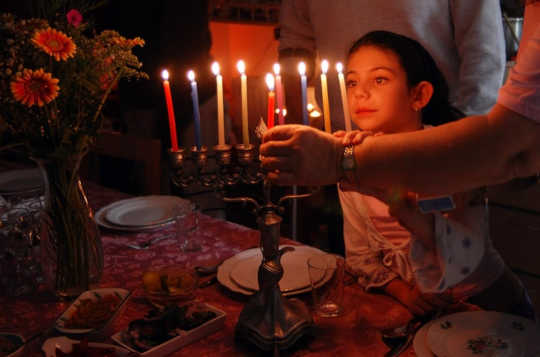
During the month of December, Jews celebrate the eight-day festival of Hanukkah, perhaps the best-known and certainly the most visible Jewish holiday.
 When your body, mind, and spirit become one, you'll feel more authentic, more grounded in your personality, and at the same time you'll move in harmony. If you can learn to be equally physical, mental, and spiritual, you will glide into a new kind of unified perception.
When your body, mind, and spirit become one, you'll feel more authentic, more grounded in your personality, and at the same time you'll move in harmony. If you can learn to be equally physical, mental, and spiritual, you will glide into a new kind of unified perception.

The animals and the natural world are relaying messages to guide and support humanity during this time of great change on the planet. The four-leggeds, winged ones, creepy crawlers, and more are coming to assist in this evolution of consciousness. As we release the self-imposed barriers between us and them, we are able to transcend the illusionary veil between us and hear their language. We are given the gift of their wisdom when we connect in love and respect and cross through the barriers that separate us.
- By Will Johnson

Most of our spiritual traditions tell us that, as humans, we are miniature reflections of God and that we have been created in God's image. If this is so, then it would follow that a more direct way to look upon the face of God would be to sit and gaze at an actual person, a real flesh-and-blood human...

Tinseled trees and snowy landscapes are not the only signs of the upcoming holiday season. Red kettles, staffed by men and women in street clothes, Santa suits and Salvation Army uniforms also telegraph Christmastime.

Tinseled trees and snowy landscapes are not the only signs of the upcoming holiday season. Red kettles, staffed by men and women in street clothes, Santa suits and Salvation Army uniforms also telegraph Christmastime.
The Army is among America’s top-grossing charities. In 2015, its 25,000 bell-ringers helped raise an all-time high of US$149.6 million. That was part of the year’s almost $3 billion revenue from bequests, grants, sales, in-kind donations and investments as well as direct contributions.
William Booth, an English evangelist, founded the Salvation Army in 1878 as a religious outreach to London’s poor. How a British evangelical church became an American icon is an ongoing interest of mine.
Entry into the United States
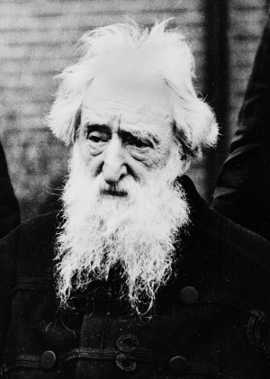 William Booth, founder of the Salvation Army. AP Photo
William Booth, founder of the Salvation Army. AP Photo
Booth, who called himself “The General,” fashioned his Army on Britain’s military. From the start, his “soldiers” wore uniforms and they described their mission in martial terms. Salvationists marched through the streets of London’s East End, a neighborhood of poor immigrants, with brass bands and female preachers. Booth and his followers also pursued “sinners” and frequently preached in bars, brothels and theaters.
Booth’s plan was to send his army worldwide, and his first stop was the United States. One of his early recruits had migrated to Philadelphia, and wrote to Booth about the residents’ need for salvation. In 1880, a small party of British Salvationists debarked at Castle Garden, New York’s first immigration center. The group immediately started singing hymns set to popular melodies and marching through lower Manhattan.
During the next few days, the English “soldiers” tacked up posters, similar to ads for commercial entertainments, for a prayer service at Harry Hill’s, a popular dance hall, theater and saloon. The venue was not only thick with drunkards, prostitutes and pleasure seekers, its unlikeliness as a religious meeting place guaranteed press attention.
Such unexpected behavior did bring the Army to the public’s attention. Their boisterousness, even in service of saving souls, was criticized by New York’s clergy and ridiculed in newspapers and magazines. That the Army featured female preachers at a time when most Protestant groups did not ordain women only added to its notoriety.
But the Army did not surrender. Pressing their “invasion” beyond New York City, the soldiers traveled first to Philadelphia and later nationwide. Their exuberance attracted young people and women to the cause.
Young people liked the notion of a military crusade for religious purposes, and women joined because the Army offered them positions of leadership and authority. In fact, William Booth’s daughter-in-law, Maud Ballington, followed by his two daughters, Emma and Evangeline, headed the American Salvation Army from 1887 to 1950.
Kettles for Christmas dinner
In both Britain and the U.S., Salvationists saw their mission as twofold: converting sinners and assisting the needy.
In the Army’s perspective, the two went hand in hand, which is why members opened shelters for addicts, alcoholics and prostitutes. Yet they also sought to aid “down and outers,” their name for the needy. Among their early outreaches were Christmas dinners for the urban poor. But finding funds for food and gifts was difficult.
By 1891, Salvationists had outposts nationwide. In San Francisco, Salvation Army Captain Joseph McFee was eager to serve a Christmas feast for a thousand of the city’s poorest residents. Frustrated by his lack of success, he decided to improvise. Grabbing a crab pot from the local wharf, he hung it from a tripod at a busy intersection. Above the pot was a sign: “Fill the Pot for the Poor – Free Dinner on Christmas Day.” McFee’s campaign was a success.
Word spread and the kettles soon provided Christmas dinners for thousands nationwide.
The kettle also helped rehabilitate the Army’s image. Instead of seeing Salvationists as an unruly pack of religious rebels, many Americans recognized their work with the poor. At a time when neither state nor federal governments provided a social safety net, the Army offered meals, beds, work and medical facilities to destitute men and women.
But it was the Salvationists’ service in World War I that sealed the deal. Eager to support the American war effort, Salvation Army leaders sent “Sallies,” the popular nickname for Army women, to the French front. The Sallies set up huts where they fried donuts, sewed buttons, wrote letters and otherwise “mothered” the troops.
The women’s faith, fortitude and friendship touched many young soldiers. One wrote in his letter home:
“These good women create an atmosphere that reminds us of home, and out of the millions of men over there not one ever dreams of offering the slightest sign of disrespect or lack of consideration to these wonderful women.”
By the war’s end, the Army had become a symbol of American humanitarianism, and fundraising was much easier. But after the 1920s, the Army’s evangelical crusade took a back seat to social service delivery, at least in their public relations. It was easier to raise money for helping the poor than for converting them.
Despite challenges, an American icon
Today, many contributors do not realize the Army is a church, a fact that has caused many Army leaders consternation.
And, much like other churches, its growth has stalled. Since 2000, it only has approximately 90,000 members. Nonetheless, it continues to be deliver social services nationwide. In 2017, according to its own records, the Army served over 50 million meals, operated 141 rehabilitation centers and provided shelter for almost 10 million people. It also provided adult and child day care, job assistance, disaster relief, medical care and community centers.
But like any other long-established institution, the Army has its challenges. Most recently, LGBT groups alleged discrimination in service provision and in hiring.
The Army has responded with its own statements of how it is “open and inclusive to all people.”
It also faces new problems ranging from a shortage of bell ringers in some cities to fewer kettle contributions as people carry less cash.
Yet the Army remains a familiar symbol for religious and philanthropic outreach. Each year, when high school and college actors perform “Guys and Dolls,” the Army graces American stages. This popular musical, inspired by a real-life Salvationist, captures the missionaries’ zealous dedication. And this holiday season, Grammy-award winning singer Meghan Trainer kicked off the 2018 Red Kettle Campaign during the Dallas Cowboys’ Thanksgiving Day game halftime show.
Salvation Army Captain Joseph McFee’s legacy lives on – providing inspiration to millions of Americans, whether they care about religion or not.![]()
About The Author
Diane Winston, Associate Professor and Knight Center Chair in Media & Religion, University of Southern California, Annenberg School for Communication and Journalism
This article is republished from The Conversation under a Creative Commons license. Read the original article.
Related Books
at InnerSelf Market and Amazon
 It is possible for the mind to become disempowered. It feels then as if reality is just a given, and all we can do is try to deal with it. The disempowered mind feels it has no choice about what it attends to. Training the attention is definitely one way to begin empowering the mind.
It is possible for the mind to become disempowered. It feels then as if reality is just a given, and all we can do is try to deal with it. The disempowered mind feels it has no choice about what it attends to. Training the attention is definitely one way to begin empowering the mind.

When Loren Jacobs, member of the Shma Yisrael Congregation, offered a prayer for the victims of the Tree of Life congregation at a campaign rally attended by Mike Pence, it left many Jews feeling very upset. The vice president’s office later denied inviting Jacobs to the event.
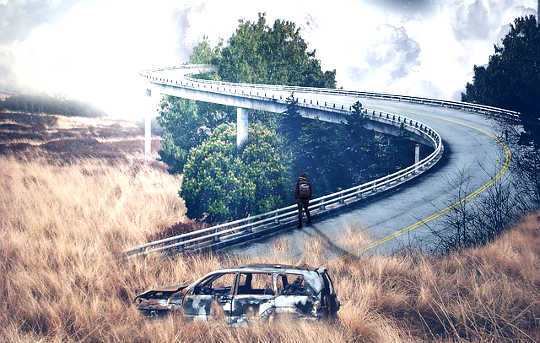 I have spent nearly twenty-five years of my adult life searching through the spiritual culture -- during which time I have worked as a body-mind-spirit publisher, a historian of alternative spirituality, and an individual seeker, sampling and struggling with many of the ideas of self liberation and self-development on the current spiritual scene (and working with the originators of some of these ideas).
I have spent nearly twenty-five years of my adult life searching through the spiritual culture -- during which time I have worked as a body-mind-spirit publisher, a historian of alternative spirituality, and an individual seeker, sampling and struggling with many of the ideas of self liberation and self-development on the current spiritual scene (and working with the originators of some of these ideas).
 Prayer can be a most difficult and trying task. The experiences of our century with its massive blind destruction, suffering, and carnage cast doubt on the concept of a God involved in the welfare of the created universe.
Prayer can be a most difficult and trying task. The experiences of our century with its massive blind destruction, suffering, and carnage cast doubt on the concept of a God involved in the welfare of the created universe.
- By John Kuypers
 When you are living in the present, you know what's important for you, and you act on that knowing. You are able to see the big picture and the smallest detail all at the same time. Your sense of timing and your instincts become sharp. Great athletes show us just how true this is.
When you are living in the present, you know what's important for you, and you act on that knowing. You are able to see the big picture and the smallest detail all at the same time. Your sense of timing and your instincts become sharp. Great athletes show us just how true this is.
- By Jamie Gruman
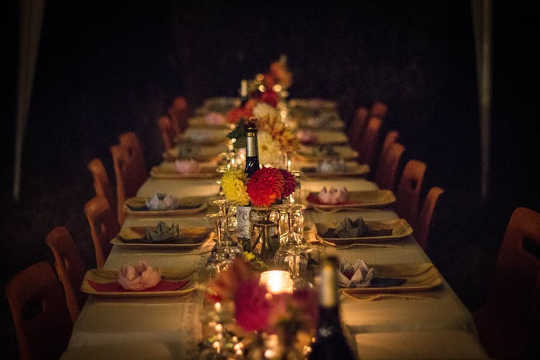 Social allergies are a lot like seasonal allergies. They’re annoying, exhausting and hard to avoid. They’re also especially common around the holidays. That’s because the holidays put you at a high risk of exposure.
Social allergies are a lot like seasonal allergies. They’re annoying, exhausting and hard to avoid. They’re also especially common around the holidays. That’s because the holidays put you at a high risk of exposure.
 Here is a powerful healing meditation to help you lose your fears about love and to cleanse your heart chakra. You may want to tape-record this meditation with soft background music, so you can easily listen to it once or twice a day.
Here is a powerful healing meditation to help you lose your fears about love and to cleanse your heart chakra. You may want to tape-record this meditation with soft background music, so you can easily listen to it once or twice a day.
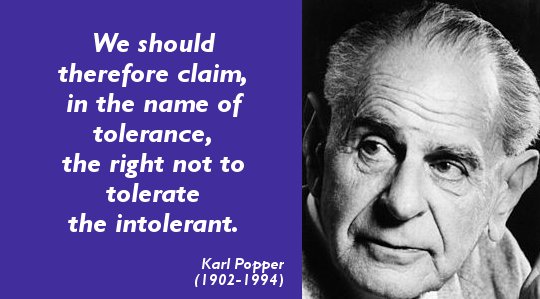
We who value tolerance sometimes behave as if we think tolerance is the ultimate value of the liberal spirit, a cure for all the ills of society. But what if your next-door neighbors come from a part of the world where their homeland custom demands that the man...

Religion does not help us to explain nature. It did what it could in pre-scientific times, but that job was properly unseated by science. Most religious laypeople and even clergy agree: Pope John Paul II declared in 1996 that evolution is a fact and Catholics should get over it. No doubt some extreme anti-scientific thinking lives on, but it has become a fringe position.
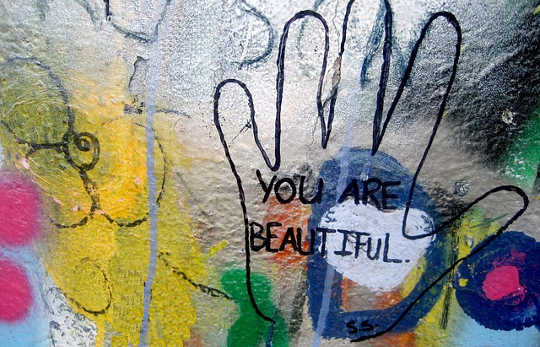
We are linked with plants through our breath. When we focus on this breath and consciously connect to the plant by giving and receiving the breath, we find ourselves intimately connected to the plant and it can be a very moving experience.
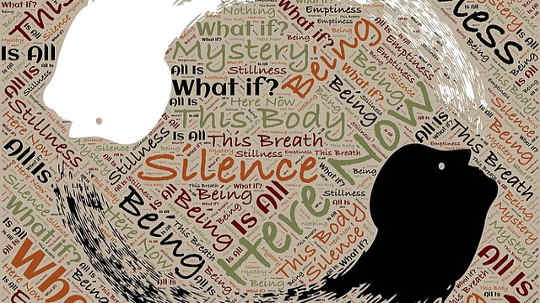 All disease, illness, unhappiness, misery, and self-punishment could be healed if we apply two principles of truth into our daily consciousness. The first is that there is a single, divine God that is All in all; and the second, that the Divinity which we call God lives inside of each and every one of us. Knowing deeply and believing completely at every level of our being that we are not separate from God, that we are one with the Divine, will heal us.
All disease, illness, unhappiness, misery, and self-punishment could be healed if we apply two principles of truth into our daily consciousness. The first is that there is a single, divine God that is All in all; and the second, that the Divinity which we call God lives inside of each and every one of us. Knowing deeply and believing completely at every level of our being that we are not separate from God, that we are one with the Divine, will heal us.
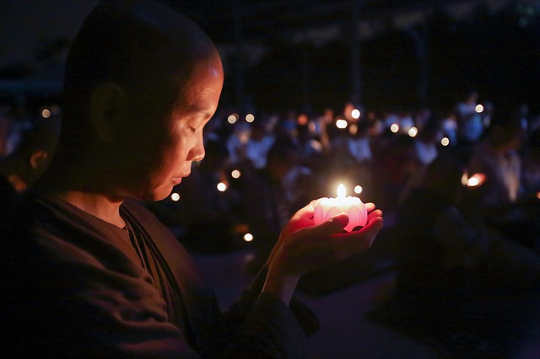
Divine Love is the needed energy for our planet to heal itself. There are so many well intentioned people and factions who think that they have the only right answers. They are often willing to fight and be mercilessly cruel to prove that they are the most Holy. Sometimes it's necessary to stand up to...
- By Andrew Weiss
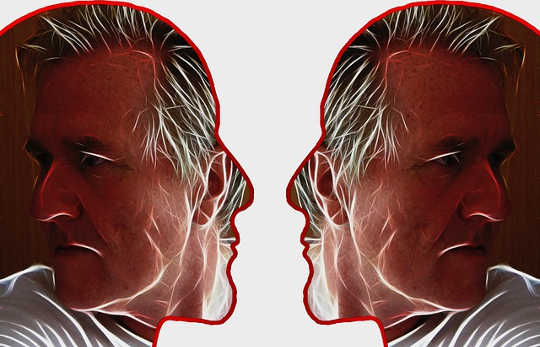
Tonglin practice is rooted in the breath. If you can breathe in and out, you can practice tonglin. The essence of the practice is to breathe in the suffering of another person and to breathe out loving-kindness, compassion, and healing. As we breathe that healing out, we are making the greatest gift we...
 I was asked 'Do you believe in miracles?' I was taken aback. Did I believe in people being spontaneously cured of cancer, virgin births, raising of the dead, parting of seas, burning bushes, and so on? Did I believe in serendipity, synchronicity, and moments of seeming happenstance that wind up being instrumental to our path?
I was asked 'Do you believe in miracles?' I was taken aback. Did I believe in people being spontaneously cured of cancer, virgin births, raising of the dead, parting of seas, burning bushes, and so on? Did I believe in serendipity, synchronicity, and moments of seeming happenstance that wind up being instrumental to our path?

The desire for happiness is the universal wish of humankind. On this, everyone would agree. Yet everyone suffers and dies. The basic fact and the basic tragedy of life is that every human being longs for peace and happiness, yet everyone is haunted by the specter of suffering, unhappiness, and death.
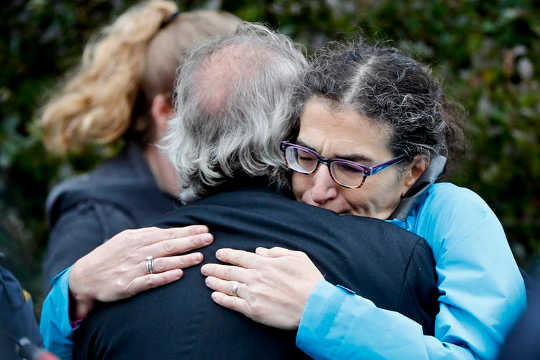
The Pittsburgh neighborhood in which the recent horrific mass shooting took place isn’t only the home of the Tree of Life synagogue. Squirrel Hill was also Mr. Rogers’ neighborhood, the place where he lived and ultimately chose to die in his own home.

Our experience of death obviously shapes the final moments of our own life. It also shapes the experience and remains in the memories of those around us. As an intensive care specialist for more than two decades, my colleagues and I do the best we can to provide high-quality end-of-life care.


















